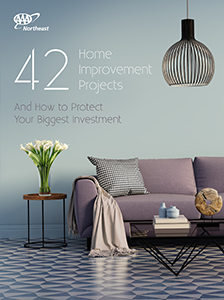Your retirement planning should begin well in advance, but as you reach different phases in retirement you’ll have some important new decisions to grapple with.
You may have your retirement savings options nailed down, but have you thought through transitioning to a retirement community, or which Medicare plan is best for you?
Here are 6 key decisions to plan for throughout your retirement.
Reevaluating your savings withdrawal rate (early retirement)
Pre-retirement you put in the time to plan a budget and decide which retirement savings options were best for you. Now that you’ve retired and are transitioning from saving to spending, you’ll need to reevaluate what the safe withdrawal rate is for your 401(k)s, IRAs, and overall portfolio.
A “safe withdrawal rate” is the amount of money (typically expressed as a percentage) you can withdraw from your portfolio each year that will ensure your money will last for the rest of your life. Financial planners commonly recommend 4% as a safe withdrawal rate if you need your nest egg to last 30+ years.
A retirement calculator will help you to estimate how much money you will need with various withdrawal rates.
Downsizing your housing (early retirement)
As a freshly-minted retiree you’ll finally have the freedom to travel and pursue fun hobbies. With your new active lifestyle and the kids out of the house, you may realize you don’t need as much living space.
Downsizing to a condo or townhouse, or moving somewhere with a lower cost of living, will help you save on property taxes, maintenance costs and monthly mortgage payments.
Profits from selling your home can be invested in your nest egg, becoming a late-game retirement savings option. Many retirees who want greater flexibility also choose to start renting at this stage.
Reasons not to downsize? Staying in your home can make sense if you:
- Paid off your mortgage and expect to pay little on taxes or repairs.
- Plan to use a reverse mortgage to fund your retirement.
- Want to pass the home on to your children.

Moving to a retirement community (early to mid-retirement)
Downsizing could also mean moving to an independent living community. With great recreational activities and amenities (plus other like-minded retirees) a retirement community is the perfect environment for you to stay active and meet new friends.
Many retirees plan to stay in their house and “age in place,” but the cost of in-home care and home modifications can be prohibitive. It’s much easier to downsize while you’re still in good health and don’t need to burden your children with organizing the move.
Getting your estate in order (mid-retirement)
A last will and testament should always be part of your simple retirement plan, but there are additional documents to consider for rounding out your estate:
- Power of attorney: designates a person you trust to make financial and health decisions on your behalf if you are incapacitated.
- Living will: spells out your exact wishes for medical treatment in the event of certain scenarios (e.g., serious injury, coma).
- Trust: gives you greater control and specificity than a will over who will inherit your property and assets, and ensures a quicker transition. There are many types of trusts to choose from; setting up a “dynasty” trust will allow you to transfer wealth to children and grandchildren while minimizing transfer taxes.
Changing your Medicare plan (mid to late retirement)
At this point most retirees begin to slow down, experiencing lower energy and an increase in health problems. The bulk of your expenses will transition from spending on travel and recreational activities, to spending on healthcare.
As your healthcare needs increase, you’ll want to consider switching from your original Medicare plan to a Medicare Advantage plan. Medicare Advantage plans have a cap ($6,700 or lower) on your out-of-pocket expenses. Once you reach that limit you’ll pay $0 for the rest of the year. Original Medicare plans put no limit on your spending (which can easily rise to tens of thousands of dollars).
Arranging long-term care (late retirement)
As you reach your 80s and 90s, your healthcare needs and need for assistance with daily activities will likely increase. Many retirees nearing the end of their life will need the level of care provided in an assisted-living or long-term care facility.
Ensure that your needs are best met by taking time to research and visit facilities before you actually need that level of care. If you moved to an independent living community while you were still in good health, you may also have the option of transitioning to an associated assisted-living facility.
Where are you at with your retirement planning? Have you begun to think through these key decisions yet?
Learn more about how to save at AAA.com/Financial.

















